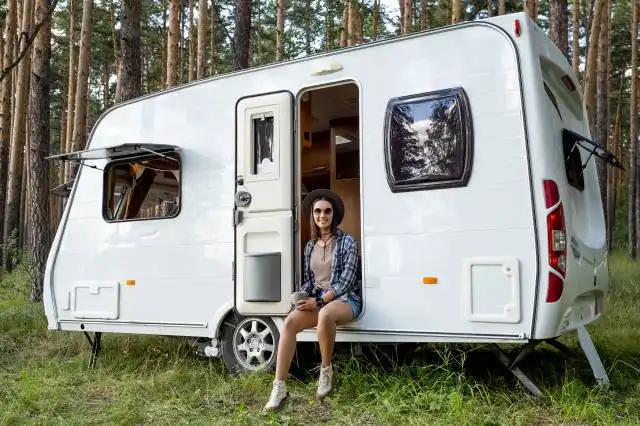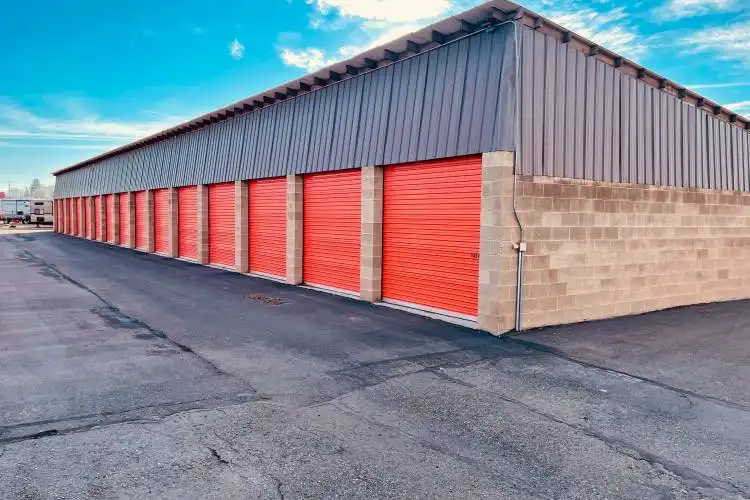Start a Canoe and Kayak Rental Business
The Wave of Environment-friendly Water Sports Ventures
| Updated


CANOE AND KAYAK RENTAL BUSINESS
Ahoy, water-spirited entrepreneurs! Embarking on a Canoe and Kayak Rental Business is akin to setting sail on a dazzling sea of opportunities. Your business will lease out canoes and kayaks to eager aquatic adventurers looking to explore serene water bodies or conquer tumultuous surfs. This lively venture not only taps into the global love for water-based activities, but also allows you to add an eco-friendly feather in your entrepreneurial cap!
Jump to Business Plan
RELATED BUSINESS IDEAS
Browse ALL Rental & Delivery Services Business Ideas
Discover Your Perfect Domain
Unlock the door to your online success with our hand-picked selection of premium domain names. Whether you're starting a new venture or rebranding an existing one, the right domain can set the tone for your digital presence. Browse through our curated list, each with its unique potential to enhance your brand's visibility and credibility.
CANOE AND KAYAK RENTAL MINI BUSINESS PLAN
This a quick reality check to help you identify the strengths and weaknesses of your business concept before you dive in.
Expected Percent Margin:
- Gross Margin: 70-80%
- Net Profit Margin: 15-25%
Earnings Expectations:
- Daily Earnings: $200 - $400
- Weekly Earnings: $1,400 - $2,800
- Monthly Earnings: $6,000 - $12,000
- Annual Earnings: $72,000 - $144,000 (assuming only 6 active months; seasonal variations apply)
Actions to Hit Those Numbers:
Equipment Cost:
- Initial Investment: At least $10,000-$15,000 for quality canoes, kayaks, safety equipment, and maintenance tools.
- Maintenance & Replacement: Regularly inspect and maintain equipment for safety and longevity.
Marketing and Customer Acquisition:
- Online Presence: Create a website and social media profiles to advertise your services. Update regularly with safety tips, images of the serene paddling environment, etc.
- Partnerships & Promotions: Form partnerships with local hotels and tour operators; offer group and seasonal discounts.
Operations & Safety:
- Staffing: Hire staff trained in water safety, first aid, and equipment maintenance.
- Safety Protocols: Devise strict protocols to ensure the safety of customers. Have liability insurance to cover potential accidents.
Location & Monitoring:
- Location: Choose a popular waterbody with easy access, ample parking, and safe waters.
- Monitoring: Invest in a booking system to track equipment and schedule rentals.
Cost Control:
- Rent: If renting a location, ensure rent is less than 10% of expected monthly sales.
- Utilities and Maintenance: Budget around $200-$300 per month.
Business Operations:
- Open Hours: Open at least 5 days a week during peak season. Offer extended hours in the summer.
- Transaction Volume: Aim for 10-15 transactions per day with an average rental rate of $20-$30 per hour or $60-$100 per day.
These are generalized estimations and can vary depending on location, demand, pricing strategy, and individual business strategies. Always consult with a financial advisor for personalized advice.
NOT WHAT YOU HAD IN MIND? Here are more ideas



Browse ALL Rental & Delivery Services Business Ideas
Grab Your Business Website Name
Before you get caught up in the whirlwind of setting up your business, invest in a domain name. It's a small but significant step that lays the foundation for your brand and makes it easier for customers to find and trust you. Just like you wouldn't build a house without securing the land first, don't build a business without securing your domain name.
"Why? Can't that wait?" Here's why it shouldn't
Step 1: Determine if the Business is Right for You
Breakdown of Startup Expenses
When starting a canoe and kayak rental business, it is important to understand the startup costs. This includes the cost of the canoes and kayaks themselves, as well as any necessary safety equipment, such as life jackets and paddles. Additionally, you may need to purchase a trailer to transport the canoes and kayaks, as well as any other necessary tools and supplies. You will also need to factor in the cost of any necessary permits or licenses, as well as any fees associated with renting the space where you will store your canoes and kayaks. Finally, you will need to consider the cost of advertising and marketing your business.
Breakdown of Ongoing Expenses
Once you have established your canoe and kayak rental business, there are ongoing expenses to consider. This includes the cost of maintenance and repair of the canoes and kayaks, as well as any necessary safety equipment. Additionally, you will need to factor in the cost of insurance, as well as any fees associated with renting the space where you will store your canoes and kayaks. You will also need to consider the cost of advertising and marketing your business, as well as any fees associated with accepting payments from customers.
Examples of Ways to Make Money
There are several ways to make money with a canoe and kayak rental business. The most obvious way is to charge customers a fee for renting the canoes and kayaks. Additionally, you can offer additional services, such as guided tours, or rent out additional equipment, such as fishing poles or camping gear. You can also offer discounts to customers who rent multiple canoes or kayaks, or offer special packages for large groups. Finally, you can partner with local businesses to offer discounts or special packages to their customers.
Step 2: Name the Business
Brainstorm potential names When brainstorming potential names for your business, it's important to consider the type of business you are running. For example, if you are running a canoe and kayak rental business, you may want to consider names that evoke the outdoors, such as "River Adventures" or "Wilderness Outfitters". Additionally, you may want to consider names that are catchy and memorable, such as "Kayak King" or "Canoe Crazy".
Do a search for similar names Once you have a few potential names in mind, it's important to do a search to make sure that no other businesses have already claimed the name. This can be done by searching online and in your local business directory. Additionally, you may want to check with your local government to make sure that the name is not already registered with them.
Consider registering the name Once you have found a name that is available, you may want to consider registering it with your local government. This will help to protect your business name and ensure that no one else can use it. Additionally, registering your business name may also help you to secure a domain name for your website.
Choose a name Once you have done your research and have registered the name, it's time to choose the name for your business. Consider the names that you have brainstormed and decide which one best fits the type of business you are running. Additionally, consider the impact that the name will have on potential customers and how it will help to differentiate your business from others.
Step 3: Create a Business Plan
Executive Summary: The executive summary should provide an overview of the business plan and its goals. It should include a brief description of the business, the products and services offered, the target market, the competitive landscape, and the financial projections.
Market Analysis: This section should provide an in-depth analysis of the target market and the competitive landscape. It should include information on the size and growth of the market, the demographics of the target market, and the competitive landscape. It should also include an analysis of the strengths and weaknesses of the competition.
Product/Service Description: This section should provide a detailed description of the products and services offered by the business. It should include information on the features and benefits of the products and services, pricing, and any other relevant information.
Marketing Plan: This section should provide an overview of the marketing strategies and tactics that will be used to promote the business. It should include information on the target market, the marketing channels that will be used, and the budget for marketing activities.
Operations Plan: This section should provide an overview of the operations of the business. It should include information on the location of the business, the staffing needs, the equipment and supplies needed, and any other relevant information.
Financial Plan: This section should provide an overview of the financial projections for the business. It should include information on the startup costs, the expected revenue and expenses, and the expected cash flow. It should also include a break-even analysis and a financial forecast.
Step 4: Obtain Licenses and Permits
The fourth step in starting a canoe and kayak rental business is to obtain the necessary licenses and permits. Depending on the location of the business, the specific licenses and permits required may vary. Generally, businesses that rent canoes and kayaks must obtain a business license and a sales tax permit. Additionally, businesses may need to obtain a special permit to operate on public waterways. It is important to research the specific requirements for the area in which the business will be located.
Cost of Licenses and Permits
The cost of licenses and permits will vary depending on the location of the business. Generally, business licenses and sales tax permits are relatively inexpensive. Special permits to operate on public waterways may be more expensive. It is important to research the cost of the necessary licenses and permits before starting the business.
Where to Obtain Licenses and Permits
The necessary licenses and permits can typically be obtained from the local government offices. Business owners should contact the local government offices to determine the specific requirements and fees for the necessary licenses and permits. Additionally, many local governments have websites that provide information about the necessary licenses and permits.
Benefits of Obtaining Licenses and Permits
Obtaining the necessary licenses and permits is important for any business. The licenses and permits provide legal protection for the business and demonstrate that the business is operating legally. Additionally, many customers may feel more comfortable renting canoes and kayaks from a business that is properly licensed and permitted.
Step 5: Acquire Equipment
When starting a canoe and kayak rental business, it is important to consider the types of canoes and kayaks that will be offered. Canoes and kayaks come in a variety of sizes, shapes, and materials, and each type has its own advantages and disadvantages. For example, inflatable canoes and kayaks are lightweight and easy to transport, but they may not be as durable as other types of canoes and kayaks. It is important to research the different types of canoes and kayaks available and decide which type is best for the business.
Once the type of canoes and kayaks has been determined, the next step is to find sources for the equipment. Canoes and kayaks can be purchased from a variety of sources, including online retailers, local sporting goods stores, and even second-hand stores. It is important to compare prices and quality between different sources to ensure the best deal is found. Additionally, it may be beneficial to purchase used equipment, as this can help to reduce costs.
When purchasing canoes and kayaks, it is also important to consider the accessories that will be needed. This includes paddles, life jackets, and other safety equipment. It is important to purchase quality accessories that are safe and reliable. Additionally, it may be beneficial to purchase extra accessories in case of emergency.
Finally, it is important to consider the cost of maintenance and repair. Canoes and kayaks may need to be repaired or replaced over time, and it is important to factor in these costs when budgeting for the business. Additionally, it may be beneficial to purchase additional canoes and kayaks in case of damage or theft.
Step 6: Find a Location
- Accessibility: When choosing a location for a canoe and kayak rental business, it is important to consider how accessible the location is to potential customers. It should be easy to get to and have ample parking. It should also be in an area that is conducive to the activity, such as near a lake, river, or other body of water.
- Cost: The cost of the location is also an important factor to consider. It should be affordable and within budget. It should also have the necessary infrastructure in place, such as electricity and running water.
- Visibility: The location should be visible to potential customers. It should be in an area that is easy to find and has good foot and vehicle traffic.
- Regulations: It is important to research the local regulations and zoning laws to ensure that the business is in compliance. This includes obtaining the necessary permits and licenses.
Step 7: Acquire Equipment
Types of Equipment Needed
- Canoes and Kayaks: The most important piece of equipment for a canoe and kayak rental business is the canoes and kayaks themselves. It is important to choose quality, durable boats that are safe and reliable.
- Safety Equipment: It is also important to have the necessary safety equipment, such as life jackets, paddles, and throw ropes. It is important to choose quality equipment that is in good condition and meets all safety standards.
- Storage: The business will also need a place to store the equipment when it is not in use. This can be a shed, garage, or other structure.
- Transportation: The business will also need a way to transport the equipment to and from the location. This can be a trailer, truck, or other vehicle.
Step 7: Market the Business
Develop a website Creating a website for the business is an important step in marketing the business. The website should include information about the business, such as the types of canoes and kayaks available for rent, the cost of renting, and any special offers or discounts. Additionally, the website should include contact information, such as a phone number and email address, so customers can easily get in touch with the business.
Utilize Social Media Social media is an effective way to reach potential customers. Creating accounts on popular social media platforms, such as Facebook, Twitter, and Instagram, can help the business reach a wider audience. Posting updates, pictures, and special offers on these accounts can help generate interest in the business.
Create a Network Networking with other businesses in the area can help generate more customers. For example, working with a local hotel or resort to offer discounts to their guests can help generate more business. Additionally, working with local tour companies can help generate more customers.
Utilize Advertising Advertising the business in local newspapers, magazines, and radio stations can help generate more customers. Additionally, creating flyers and distributing them in the local area can help generate more business.
Offer Special Deals Offering special deals, such as discounts for large groups or special offers for returning customers, can help generate more business. Additionally, offering discounts for customers who book in advance can help generate more business.
Step 8: Set Up an Accounting System
When starting a canoe and kayak rental business, it is important to set up an accounting system. There are two main types of accounting systems: cash-basis and accrual-basis. Cash-basis accounting is when income and expenses are recorded when cash is received or paid out. Accrual-basis accounting is when income and expenses are recorded when they are earned or incurred, regardless of when cash is received or paid out.
Benefits of an Accounting System
Having an accounting system in place is important for any business, but especially for a canoe and kayak rental business. An accounting system will help the business owner track income and expenses, as well as provide a clear picture of the business’s financial health. It will also help the business owner to make informed decisions about the business’s future.
Choosing an Accounting System
When choosing an accounting system for a canoe and kayak rental business, it is important to consider the size and complexity of the business. For a small business, a cash-basis accounting system may be sufficient. For larger businesses, an accrual-basis accounting system may be necessary. It is also important to consider the cost of the accounting system, as well as the time and effort required to set it up and maintain it.
Setting Up an Accounting System
Once an accounting system has been chosen, it is important to set it up correctly. This includes setting up accounts, entering transactions, and reconciling accounts. It is also important to ensure that the accounting system is secure and that all data is backed up regularly. Finally, it is important to ensure that the accounting system is compliant with all applicable laws and regulations.
Step 9: Hire Employees
Research the local labor market When researching the local labor market, it is important to consider the availability of qualified employees, the wages being offered for similar positions in the area, and the cost of benefits. Additionally, it is important to consider the local laws and regulations regarding hiring and wages.
Develop a job description Creating a job description is a great way to ensure that potential employees understand the expectations of the position. The job description should include a list of duties, the qualifications needed for the position, and the compensation offered.
Create an application process Creating an application process is important to ensure that all potential employees are given the same opportunity to apply for the position. The application process should include a job application, a resume, and an interview.
Conduct background checks Conducting background checks is important to ensure that the employee is qualified and trustworthy. Background checks should include a criminal history check, a credit check, and a reference check.
Offer competitive benefits Offering competitive benefits is important to attract and retain qualified employees. Benefits should include health insurance, paid time off, and retirement plans.
EXPLORE MORE CATEGORIES
Browse ALL Business Idea Categories
TAKE THE NEXT STEPS










